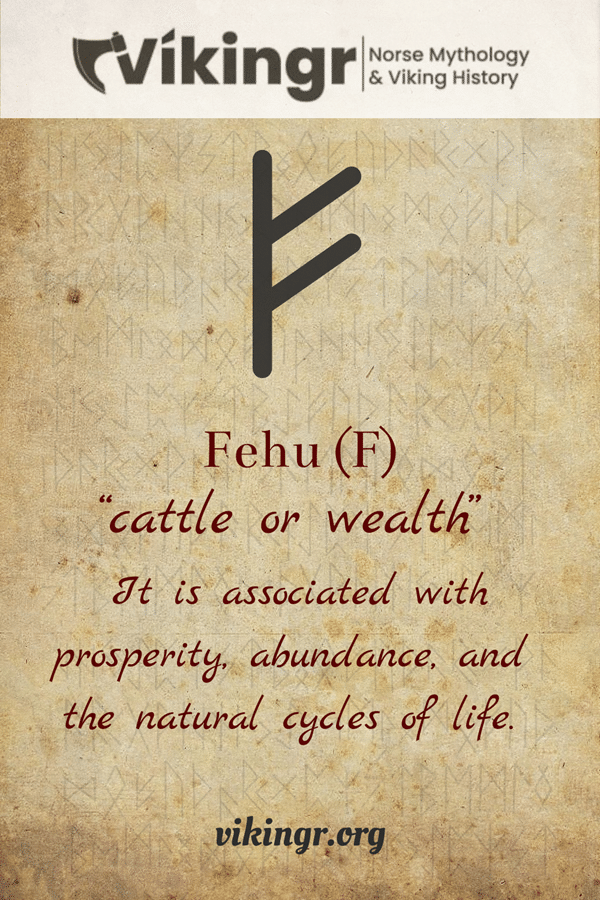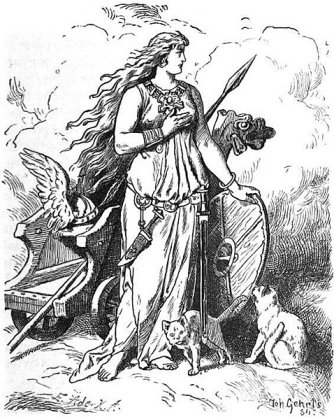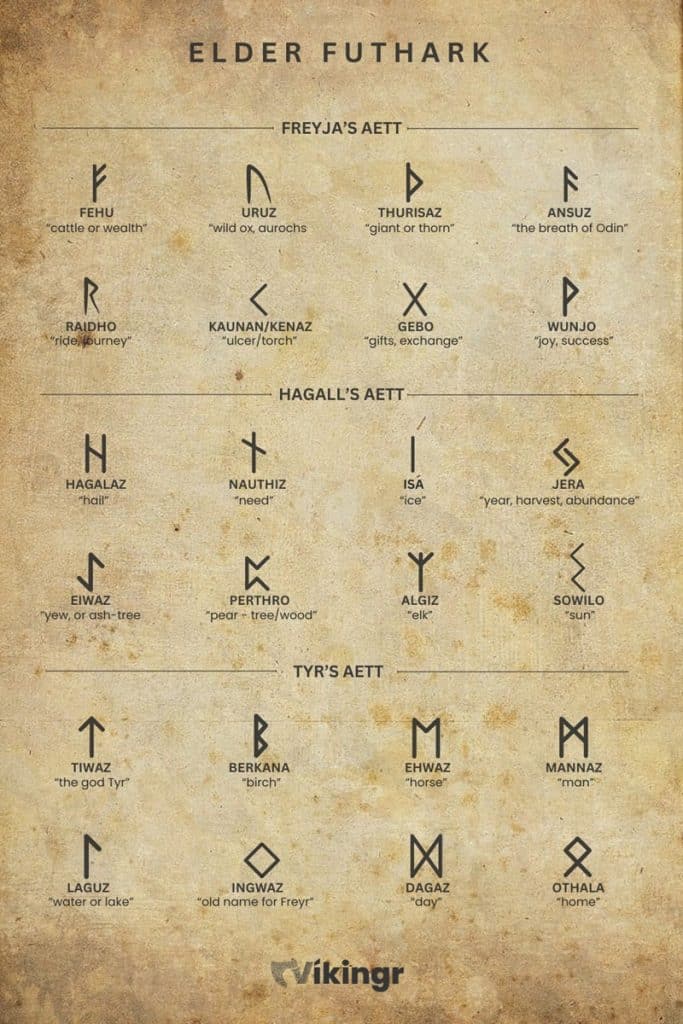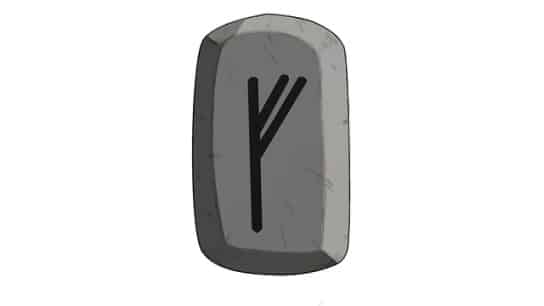In the early days of the Germanic peoples, a mysterious script was born – the Elder Futhark. Among the twenty four runes, one stands out for its ubiquity and importance – the Fehu rune. Yet, what does it truly signify? Here I am trying to capture the meaning and symbolism of the Fehu rune.
Historical Background
The origins of the Fehu rune are shrouded in the mists of time. It emerged sometime in the Proto-Germanic era, around the 1st to 2nd century AD. Interestingly, it holds the first place in both the Elder and Younger Futhark alphabets. While this might be by chance, I personally tend to think it is suggestive of its early significance. As an important rune in both of the futhark alphabets, this Old Norse rune is found etched on all kinds of ancient artifacts.
The fehu rune’s presence is not limited to specific geographic areas. Instead, it has turned up throughout the Viking landscape, from the chilly northern reaches of Scandinavia to the bustling trading posts of Central Europe. Thus, it forms a fascinating puzzle piece in our understanding of the widespread Viking influence.

Graphical Representation of the Fehu Rune
Visually, the Fehu rune resembles part of an upward-pointing antler, a straightforward, vertical stroke with two shorter diagonal lines reaching up and to the right. Variations exist, of course, suggesting the alphabet and maybe this rune was important and a dynamic, changing character.
Phonetic Value
Phonetically, the Fehu rune represents the ‘f’ sound in the Proto-Germanic language, a value that has persisted across the Germanic languages. From the Norse ‘fé’ to the Old English ‘feoh,’ the resonance of Fehu still echoes in the languages we speak today.
Symbolic Meaning of the Fehu Rune
Among the Old Norse people, the Fehu rune meant ‘cattle’ or ‘wealth.’ A seemingly mundane interpretation, yet deeply symbolic in the context of the people of the Viking Age. Cattle were not just livestock, but a measure of a person’s wealth, a tangible display of prosperity.
Digging into the symbolism of the time, you find the enigmatic Goddess Freya, the Vanir goddess of love, beauty, and – fittingly – wealth. The fehu rune’s association with Freya adds a layer of sophistication to its interpretation, linking material wealth with spiritual abundance.

Furthermore, the Fehu rune embodies a dynamic force. It signifies not just possession, but the process of gaining wealth, the flow of prosperity. It reflects the Germanic culture’s drive for exploration, trade, and expansion, a mirror to their ambitious spirit.

The Aett and its Symbolism
The fehu rune belongs to the first aett of the Elder Futhark, often associated with the Vanir siblings Freyr and Freya. This grouping of eight runes is viewed as a cycle of initiation and growth, a journey from chaos to order. As the first rune, it marks the beginning, the seed of potential.
The first aett carries themes of creation and fertility, aligning with Freya’s domain. Fehu, representing wealth and abundance, fits seamlessly into this narrative, embodying the material realization of these themes.
Our lady Freya, the enchantress of love and abundance, watches over this aett. The Fehu rune, therefore, carries her blessings, an auspicious start to any venture, a beacon of prosperity in the journey of life.
Elder Futhark Quiz
Do you want to test your knowledge of Elder Futhark runes? Then this quiz is perfect for you!
Don’t forget to play our other games as well!
The Fehu Rune Used in Divination and Magic

While I don’t really subscribe to the belief in divination and magic, it’s a realm that holds undeniable fascination. It’s said that in runic divination, drawing Fehu signifies impending wealth or success. It heralds a period of growth, a promising sign for those in search of progress.
People historically believed that runes held magical properties. They allegedly used the rune in spellwork, particularly in spells intended to attract wealth or guarantee a successful outcome. Though we must tread carefully here, as historical evidence is somewhat scarce, it’s a captivating thought, nonetheless.
In the modern era, various neo-pagan groups have adopted Fehu’s symbolism, continuing its use in rituals and spellwork. Its power to attract wealth and success makes it a popular choice, showing the enduring allure of this ancient rune.
Fehu to Fe in the Younger Futhark – Unchanged Journey
As the Elder Futhark slowly transformed into the Younger Futhark, also known as Norse runes, around the 7th and 8th centuries, Fehu remained a constant.
Symbolizing wealth and prosperity, it retained its form and meaning, continuing to represent the ‘f’ sound. In the Younger Futhark, it is known as fe. Its steadfast nature reflects the enduring value of prosperity across ages.
Fehu Frequently Asked Questions
It symbolizes wealth, prosperity, and the process of attaining these. It’s associated with material abundance and the drive to achieve success.
The Fehu rune represents the ‘f’ sound in the Proto-Germanic language and has retained this phonetic value across the Germanic languages.
Fehu is part of the first aett of the Elder Futhark, associated with Freya. It signifies the start of a journey, the potential for growth, and the promise of prosperity.
In divination, people interpret Fehu as a sign of impending wealth or success. Historically, they thought to use it in spells to draw wealth or secure a successful outcome.
Featured Image Credit: BK, Public domain, via Wikimedia Commons

Enlighten information I’m Taurus with bull head tattoo with few deer antlers on my wall that’s crazy stuff. Always learn new everyday 😉
Cool Shane! And thx for sharing!